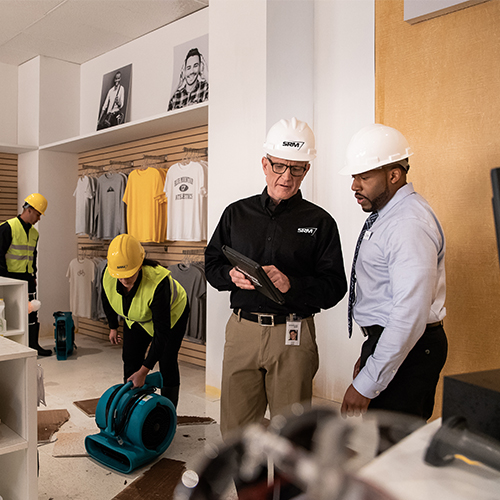
If you’ve been impacted from recent Arctic Freeze Events, or devastating Hurricane Ian, you know that unexpected disasters come with zero to no warning. Even if you were lucky enough for your business to go unscathed by these recent events that effected a majority of our Nation – you know disasters can strike when you least expect them. But that doesn’t mean you can’t be prepared. As a business owner, it’s important that you anticipate the worst, so that you are prepared if the time ever arises. Pre-loss planning helps prepare you for the unexpected so you can get back to business faster following a disaster. As a business owner, you already know that losing just one day can severely impact your company as well as your employees. When these events occur every business in your area that has been affected will be reaching out for help. In area wide events, the first resources that are depleted are local resources. Having a Pre-Loss Agreement with a local, yet nationally backed company, such as ServiceMaster Recovery Management, means having these resources ready immediately following an event – instead of searching for a restoration company afterwards.

Part of Pre-Loss Planning is having a business continuity plan. A business continuity plan will help prepare you and your employees for a variety of possible disasters. This plan includes creating preventative and recovery strategies that your organization is educated on. You will know exactly what to do to get back to normal as quickly as possible. Don't be caught off guard and left wondering how to continue running your business after a disaster hits.
Disaster can strike at any moment. Being unprepared will only make the recovery and restoration process more extensive. With a business continuity plan, you’ll know how to operate until your building, the technology, and everything else is fully restored. Even if work is unable to be done on-site, having a contingency plan will help you manage temporary situations. It will also help to keep your essential equipment safe.
Planning Ahead Will Help You:
- Limit the severity of disruption to your business
- Prepare for working remotely if your office is severely damaged
- Expedite the restoration process
- Minimize any financial losses
- Avoid closing your doors permanently
- Equip employees and managers with the information and training they need to get their jobs done until everything is restored
Many business owners are so focused on the countless daily tasks that come with running a business. They don’t think about what they would do if a disaster – be it a flood, fire, or severe weather – were to severely impact their property and their business. Don’t get caught unprepared.
The best way to recover from a natural disaster is to prepare for it before it happens. You can’t control when or if natural disasters strike, but small business disaster planning will minimize the harm it causes to your business if it does.
Here Are Some Of The Key Items To Include In Your Business Disaster Planning Checklist:
Know What Disasters Can Affect Your Area: Is your region prone to earthquakes? Tornados? Do they have a fire season? Is your business located in a coastal city where it could be hit by a hurricane? Knowing what potential disasters, you’re most likely to face is the first step in putting a disaster response plan together
Create A Disaster Response Plan: Do routine audits of your security systems, identify any potential vulnerabilities, and plan disaster drills so all your personnel know what to do
Establish A Communication Plan: Have an updated list of emergency personal numbers, your insurance information, processes to follow, how employees will be updated during the disaster (phone, email, social), store them somewhere you can access them quickly
Backup Important Documents And Data: scan your most important business documents and records, and keep them on an external hard drive offsite at a different location, or a cloud-based storage system
Have An Evacuation Plan: Plot out your evacuation routes, keep emergency exit signs well-lit and clearly marked, and designate safe outdoor meeting areas in case of a disaster where you and your personnel can be accounted for until first responders arrive
Create An Emergency Kit: Assuming you could be without power or running water for a few days at least, have a kit on standby with a first aid kit, extra batteries, non-perishable food, and bottled water
Review Your Insurance Coverage: Review your insurance policy and make sure you know what your deductibles are, and what you're covered for if your business is damaged by a natural disaster. Each policy covers something different, so make sure that your policy covers things like water damage, fire, earthquake damage, and other business disruptions
We are here to provide the peace of mind you need to make sure your business is protected. We’ll help you determine the best plan of action you and your employees should take using the proper tools, resources, and planning. A rapid response is critical after a disaster. No matter how challenging the situation, we can assess your situation and immediately help you recover. With SRM, your business is in the best hands.

